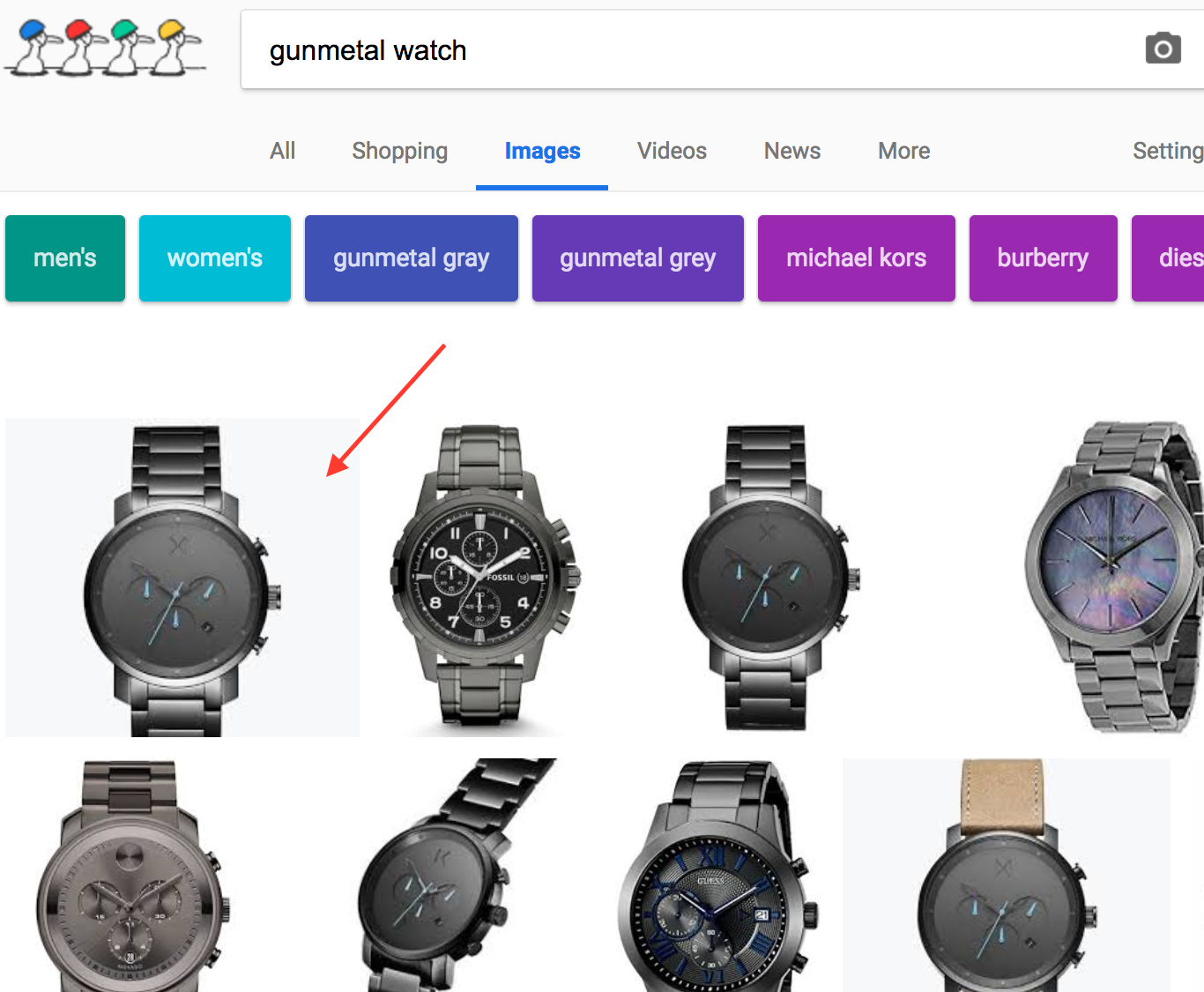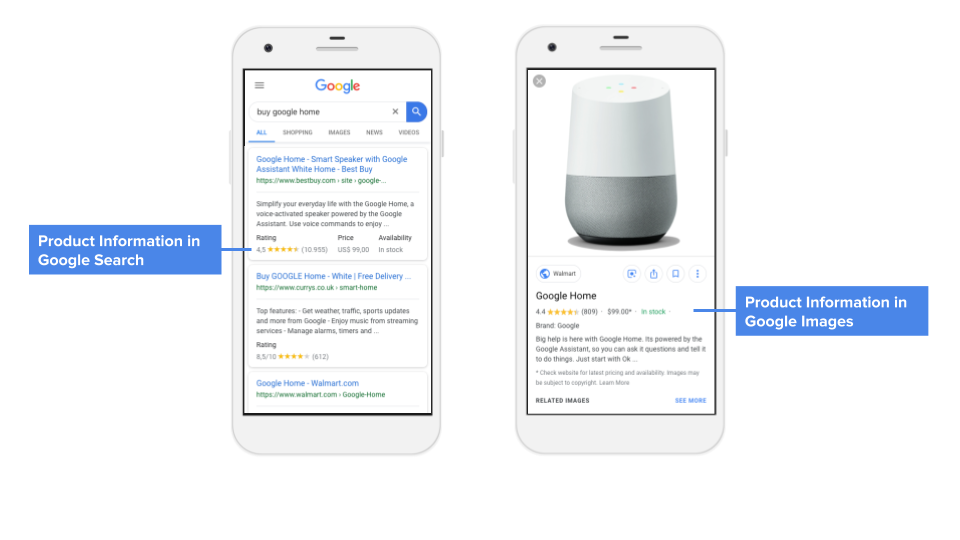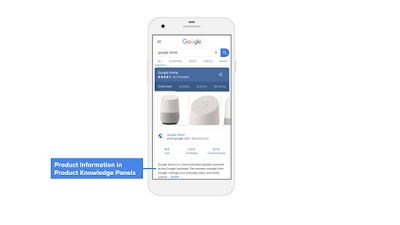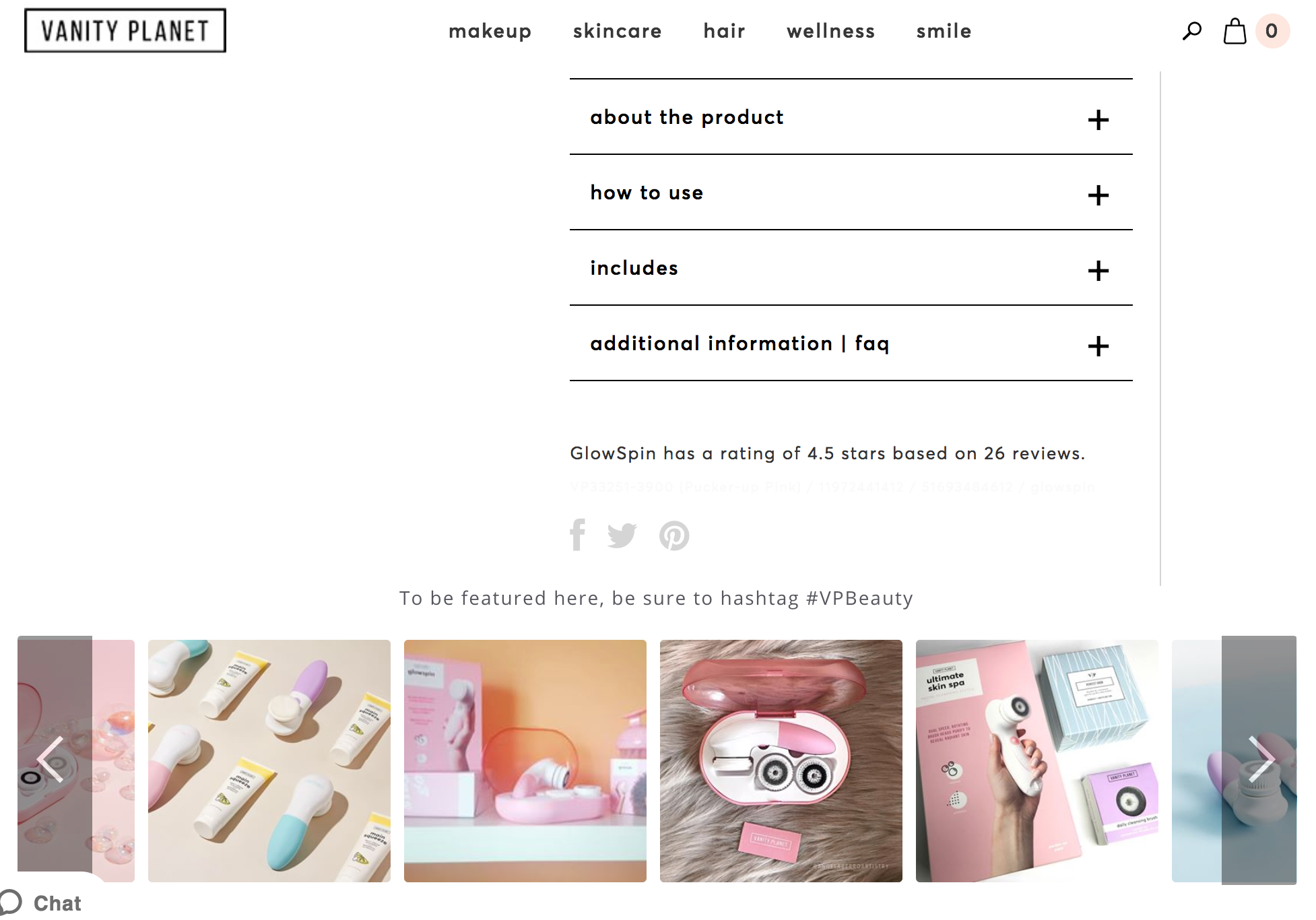Around three-quarters of U.S. internet users regularly or always search for visual content prior to making a purchase, according to eMarketer; only 3% never do.
When it comes to shopping online, product images create a positive experience for potential customers.
Many experts share that featuring multiple professional images for a product helps reduce customer uncertainty, resulting in improved conversion and lower return rates.
Google Images search share is approximately 26% of overall search, according to Jumpshot and Moz.
Optimized product images can drive new customer acquisition for ecommerce websites. Connecting discovery of up-to-date and accurate product information like images is key to completing a successful buyer experience on Google Images.
Here’s why Google Images offers a great opportunity to acquire new quality traffic.
Google Images: What Changed?
Google partnered with Getty Images to create a new search results experience for Google Images users.
As result of this partnership, Google announced two major changes to image search that change how Google displays indexed images and refers traffic to publishers.
Moving forward, Google is removing the option to “View Image” and replacing it with “Visit Site”, theoretically shifting traffic from Google Search to publisher sites, as evidenced by Google’s Danny Sullivan in the following tweet:
Today we’re launching some changes on Google Images to help connect users and useful websites. This will include removing the View Image button. The Visit button remains, so users can see images in the context of the webpages they’re on. pic.twitter.com/n76KUj4ioD
— Google SearchLiaison (@searchliaison) February 15, 2018
Ecommerce marketing professionals have a tremendous opportunity to create a new or improved channel for customer acquisition through Google Image Search.
Here are three ways to optimize your product images and get them indexed in Google search for high-quality traffic with purchase intent.
1. Nail the Basics of Image Optimization
Descriptive file names are key to getting your product images found.
Also, you’ll want to add optimized alternate text. Image alt attributes are a must for ecommerce websites in case an image doesn’t load.
Google also uses the alt text to understand image context which has been confirmed by the Google webmaster team.
A great example is how MVMT Watches names their product images.
As shown in the below example of MVMT watches, if someone searches for “gunmetal watch”, MVMT owns the first organic result in Google Images search, largely due to proper use of naming and image alt text.

For more help with the basics of image optimization, see 14 Important Image SEO Tips You Need to Know.
2. Markup Your Images with Schema
Using structured markup to enable rich product images and product attributes lets brands attract potential searchers while they are searching for items to buy on Google or images that include products you sell.
Maintain the accuracy and freshness of your product information, so your customers find the relevant, current items they’re looking for.
Make Google Images your storefront window with structured markup. A must for any ecommerce brand or retailer is adding structured data markup to websites and ensure Google understands the product images and related attributes.
Google suggests adding markup to your product pages so they can provide detailed product information in rich search results, including Google Images. High intent searchers can see product price, availability, and review ratings displayed on search results.
Google has enabled a new report for ‘Products’ in Search Console for ecommerce sites that use structured markup to annotate their product information.
This new report allows a brand or search marketer to see any pending issues for markup on your site. Once an issue is fixed, the report can be used to validate the resolution of your issues by recrawling your affected pages. Learn more about the rich result status reports.
3. Show Your Product Information in Google Search & Google Images
Another must for any marketing professional working with a retailer or ecommerce website is having accurate information about your products show up in Google Search and Google Images.
With the recent changes to Google product feeds, you can now update your product information in real-time to match related queries from high intent searches or buyers.
The new expansion of the Google product feed is boon for retail brands and marketers looking to properly display their product information (like images) in real-time.
Imagine a fast fashion brand that changes its product inventory quarterly or brands offering exclusive or limited edition products that they launch and sunset on Google Search and Images.
Marketers can now easily upload their product feed and images to Google’s Merchant Center making them eligible for immediate display in search results for web and images search.
The product information (like images) is ranked based on the relevance to search queries from the user, and best of all, it’s free to use. This functionality is now available to brands in the US with additional countries rolling out soon.

4. Show Your Product Images in Google Knowledge Cards
New for 2019 is Google giving manufacturers more control over their brand and product information.
Brands that manufacture their own products, original equipment manufacturers (OEMs) and/or B2B companies will attest that getting their product images to show accurately in Google is imperative for discovery in their category and overall brand awareness.
Another recent announcement from Google is the ability to update your product information (like Images) through their Google Manufacturer Center.
You can now update your product description, variants, and rich content like images and videos that can show on the product’s knowledge panel.

5. Leverage Your Customers for Authentic Images
Harness the power of user-generated content to increase trust and conversions. Add customer images throughout your ecommerce website.
Encourage your customers to post their images (with your products) to platforms like Facebook and Instagram, then repurpose that content on your product and checkout pages.
Follow brand leaders like Vanity Planet, which encourages customer engagement and shares their UGC throughout the shopper journey:

6. Compress Your Images
Last but not least, ensure that your images load fast and are optimized for speed.
There are many tools, such as TinyPNG, that help you compress your website images.
Also, most hosting platforms offer CDN services for fast delivery. An optimized file size improves your odds for indexing in Google Images.
Properly followed and executed, these six image search tactics can give your ecommerce website a boost in traffic and sales.
Image Credits
Featured Image: Paulo Bobita
All screenshots taken by author





